- Home
- Solutions
- Rack Systems
- Pushback Rack
Pushback Rack
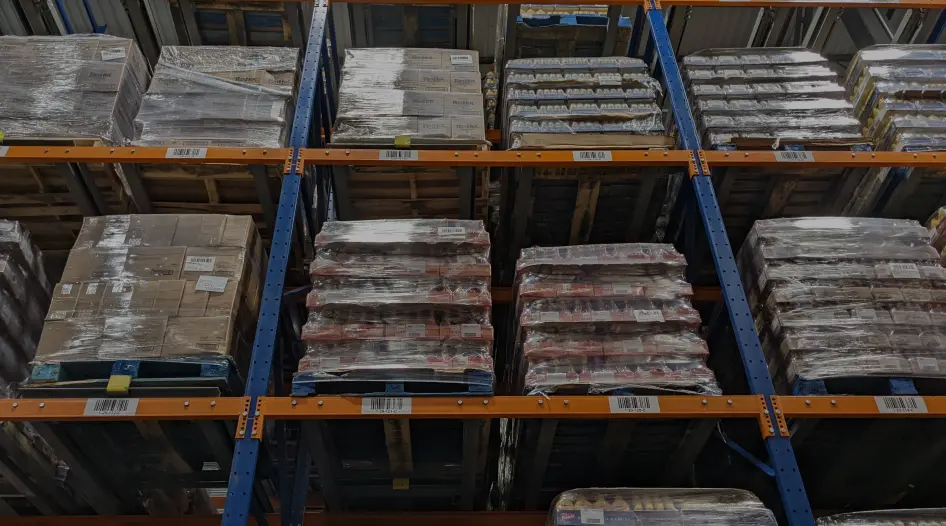
Pushback racks, distinct from drive-in racks, excel in high-density storage applications. They provide up to 90% more storage in smaller areas compared to selective racking, making them ideal for efficient space utilization.

How Pushback Racks Work
Manufacturers engineer pushback racks with a unique slanted rail and nested cart design. This setup allows for efficient, high-density storage.
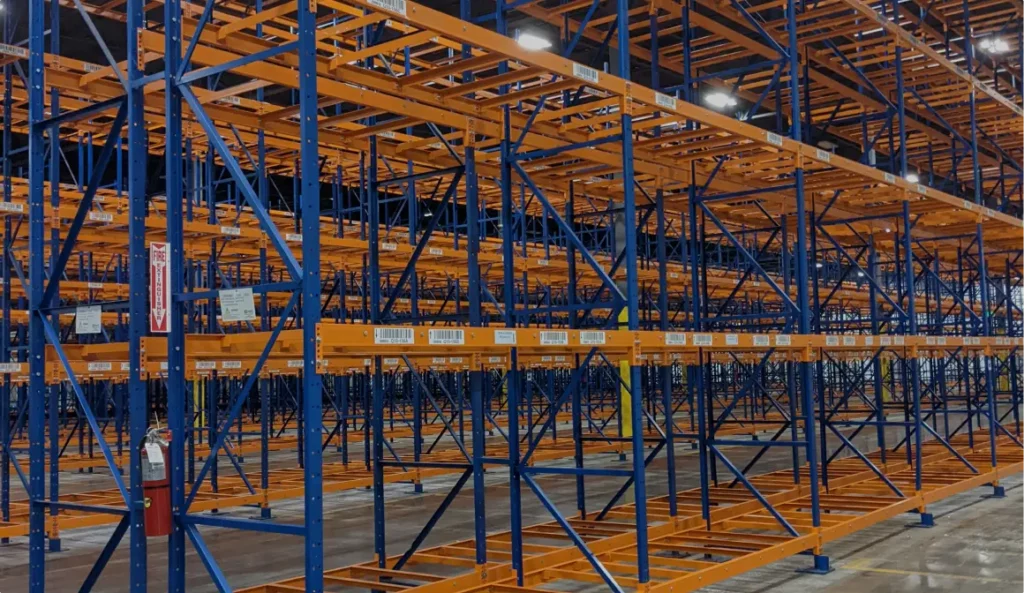
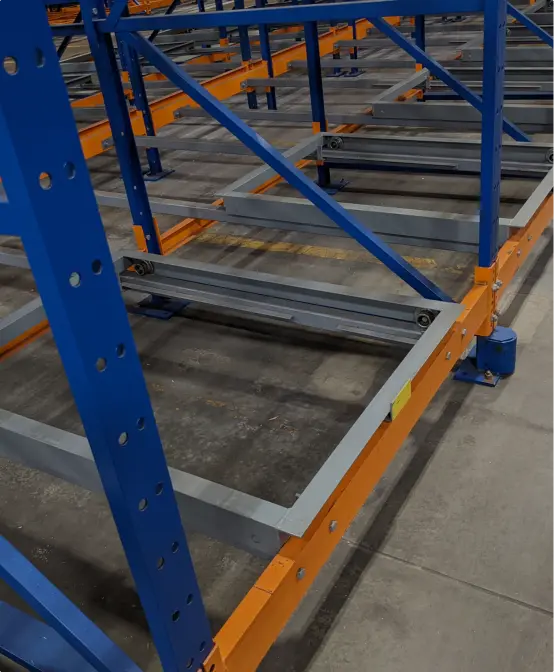
As each new pallet loads into the system, it pushes the preceding pallet backward along the inclined rails. The continuous movement of pallet positions allows for more storage space in a single lane. While a pushback system might appear complex at first glance, they’re surprisingly simple to operate and maintain.
Their robust design ensures durability and reliability, even with minimal maintenance, making them a practical solution for busy warehouse environments with loads of storage activity.
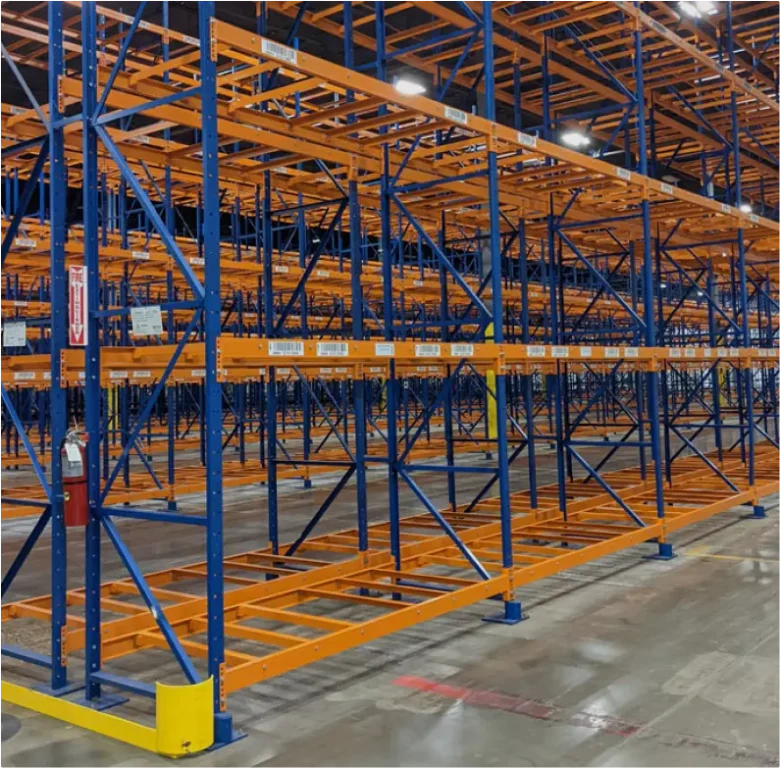
Ideal Usage for Pushback Racks
Pushback racks are particularly well-suited for scenarios involving a high number of SKUs, especially if there are more than five pallets per SKU.
This makes them an advantageous choice for facilities that need to store a diverse range of products in a compact space. They offer a significant increase in storage density compared to other racking systems, especially selective systems, and leverage a “last-in-first-out” (LIFO) storage system, meaning the most recently stored items are the first to be retrieved.
While this method is an efficient choice for many different storage environments, it often poses a challenge for products with limited shelf life or those requiring strict stock rotation. This means while pushback racking is effective in certain environments, it’s not the right choice for every business.
Pushback Racking Components and Configuration
Pushback racking leverages several essential components, each contributing to the overall functionality of the entire storage system. We already touched on some of these components briefly, but here is a more detailed explanation of each one:
Upright Frame
The upright frame provides the structural support for the entire system, ensuring stability and durability.
Incline Rails
Nested Carts
Each cart is designed to hold a single pallet and nests neatly atop the cart in front when pushed back, facilitating the system's push back functionality.
When it comes to configuring these components, there are a few things to keep in mind:
Depth of Lanes
Most systems range from two to five pallets deep. The depth of each lane is crucial for optimizing storage density. A two-deep configuration offers a balance suitable for warehouses with a wide variety of SKUs, while deeper configurations, like five-deep systems, maximize storage density and are ideal for large quantities of the same SKU, typical in bulk storage applications.
Pallet and Cart Size
Pushback systems are quite customizable, accommodating different pallet sizes and load types. There are even specialty cart designs that work with varying rail spacings for oversized or irregularly shaped items.
Layout
Height of the System
The maximum height of the storage system is often defined by warehouse dimensions and the capacity needs of the racking system. The higher a system is built, the more serious capacity calculations become. For taller systems, consulting with an experienced engineering team is best to ensure overall system safety.
Pushback Racking System Installation
Installing pushback racking systems demands precision and adherence to specific guidelines to ensure safety and functionality. Here are key tips for a successful installation.
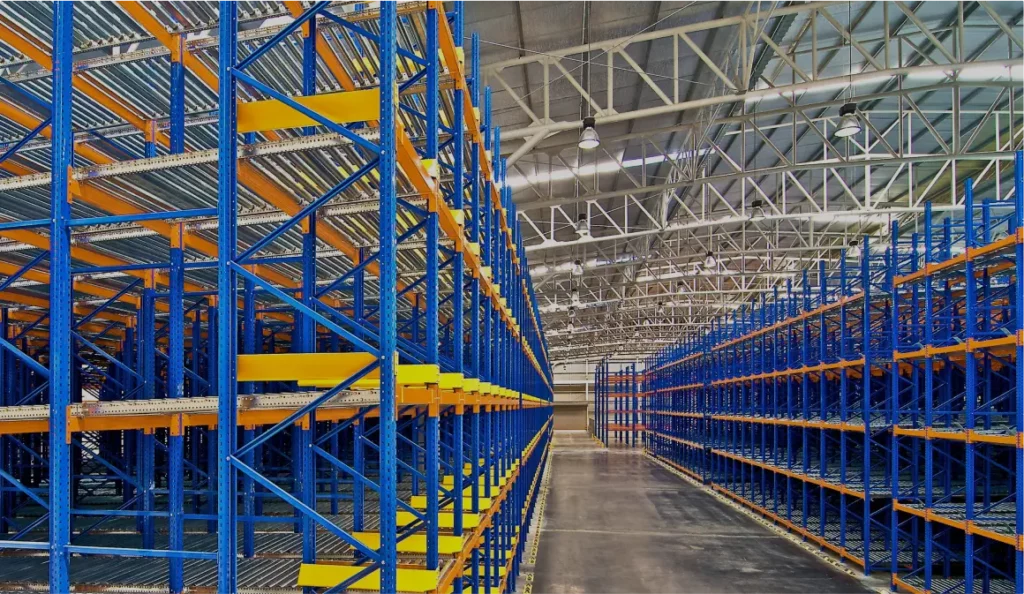
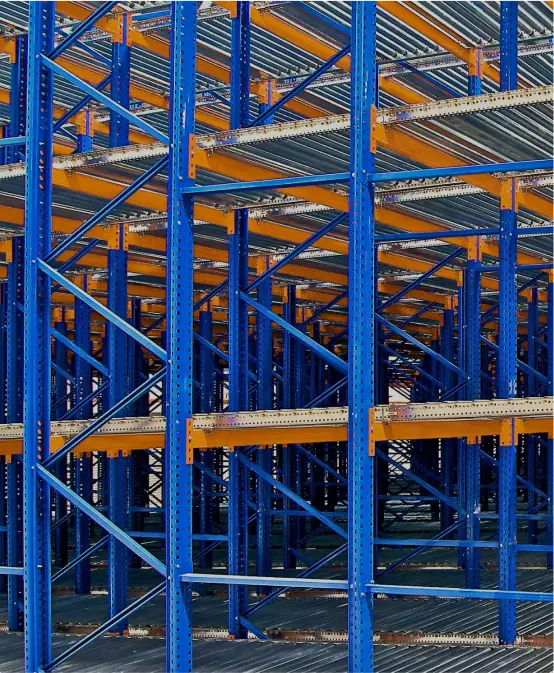
First, always consider professional installation services. While relying on in-house team members to tackle installation might seem cost-effective, proper setup requires precision and a firm understanding of the engineering factors that a rack system like this demands.
A professional installation team will ensure racking is installed on a sound concrete floor, ensure everything is level, and address any slope issues before beginning.
Moreover, racking expats will know when it’s appropriate to mix components and when to source parts from the same manufacturer to ensure the overall stability and safety of the structure. Safety considerations, like OSHA requirements, must be adhered to both during construction and during the lifecycle of the racking structure. A professional team will have the information your business needs to stay safe.
To give you an idea of what the actual installation looks like, here is a very brief overview of the process:
- Verify all components are present using the packing list and supplemental drawings.
- Inspect the installation area for obstructions and building column locations.
- Lay out accurate and straight chalk lines for precise rack placement.
- Install racks without pre-assembling them on the floor, which could cause damage.
During system erection, it’s best to start with a single bay, making sure it’s both plumb and square. A professional team will come with tools like a plumb bob or laser equipment for accuracy. Once everything is in place, they’ll tighten everything according to specific torque values.
From here comes racking structure anchoring. Each rack column will need proper anchoring with the right type of anchors. In most cases, they’ll follow manufacturer instructions for proper anchor installation.
A professional team will engage in regular inspections during the entire installation process, double-checking that everything remains plumb, square, aligned, and that no components are damaged. After completion, they’ll then test the system to confirm it operates smoothly and meets design specifications.
Safety Considerations
While a professional installation team will ensure a pushback racking system is properly installed, long-term inspections and maintenance are still necessary. Adherence to regulatory standards and consistent upkeep are key to maintaining a safe and efficient warehouse environment.
Regular Inspections and Maintenance
Always conduct frequent inspections, including looking at the system's rails to ensure they are clean and clear of debris. During these inspections, take note of any wear and tear on components, writing them down in a log to ensure proper upkeep and record keeping. If any issues come up, address them promptly to prevent system malfunctions.
Operator Training and Load Management
Always make sure your team members working with a pushback system are adequately trained. This includes both forklift operations as well as how the pushback system works. They’ll need to ensure that they evenly distribute loads and never exceed the system’s weight capacity.
Compliance with Regulations and Standards
Abide by regulations and standards to ensure your racking system is not only compliant but also safe for use. There are industry standards like the MHI’s ANSI MH16.1-2023, Design, Testing, and Utilization of Industrial Storage Racks, as well as possible federal and local regulations to review. Here are some tips from the Rack Manufacturers Institute to help you understand basic pushback rack safety.
Let's Discuss How Pushback Rack Can Optimize Your Warehouse
Master your inventory with reliable and affordable pushback pallet racking solutions from East Coast Storage Equipment.
Deciding if Pushback Rack is Right for You
Adding a pushback racking system to your facility floor is a big decision — not only in terms of space requirement but also the costs of obtaining equipment and installation. But, if you’re in need of a LIFO system with high-density storage, a pushback system can add some extra operational efficiency to your business.
Here at East Coast Storage Equipment, we carry a wide selection of pushback racking systems from all the industry’s top manufacturers. You’ll see used equipment of all types, helping you find a system that fits your needs without breaking the bank. We also offer full facility design and installation services, with our in-house fabrication team on standby to craft custom solutions to meet all your storage needs.
Be sure to explore our inventory of pushback racks and get in touch with the team today to learn more about our design and installation services.

Frequently Asked Questions
Lorem ipsum dolor sit amet consectetur?
Lorem ipsum dolor sit amet consectetur. Vel purus vivamus diam suscipit neque in. Pulvinar ante elementum ultrices venenatis in. Libero cras massa ac dolor facilisis sollicitudin viverra sollicitudin vel. Vitae suspendisse urna consectetur cum convallis tellus parturient. A libero at quam tincidunt posuere venenatis at at lectus. Sed morbi convallis aenean in.
Lorem ipsum dolor sit amet consectetur?
Lorem ipsum dolor sit amet consectetur. Vel purus vivamus diam suscipit neque in. Pulvinar ante elementum ultrices venenatis in. Libero cras massa ac dolor facilisis sollicitudin viverra sollicitudin vel. Vitae suspendisse urna consectetur cum convallis tellus parturient. A libero at quam tincidunt posuere venenatis at at lectus. Sed morbi convallis aenean in.
Lorem ipsum dolor sit amet consectetur?
Lorem ipsum dolor sit amet consectetur. Vel purus vivamus diam suscipit neque in. Pulvinar ante elementum ultrices venenatis in. Libero cras massa ac dolor facilisis sollicitudin viverra sollicitudin vel. Vitae suspendisse urna consectetur cum convallis tellus parturient. A libero at quam tincidunt posuere venenatis at at lectus. Sed morbi convallis aenean in.